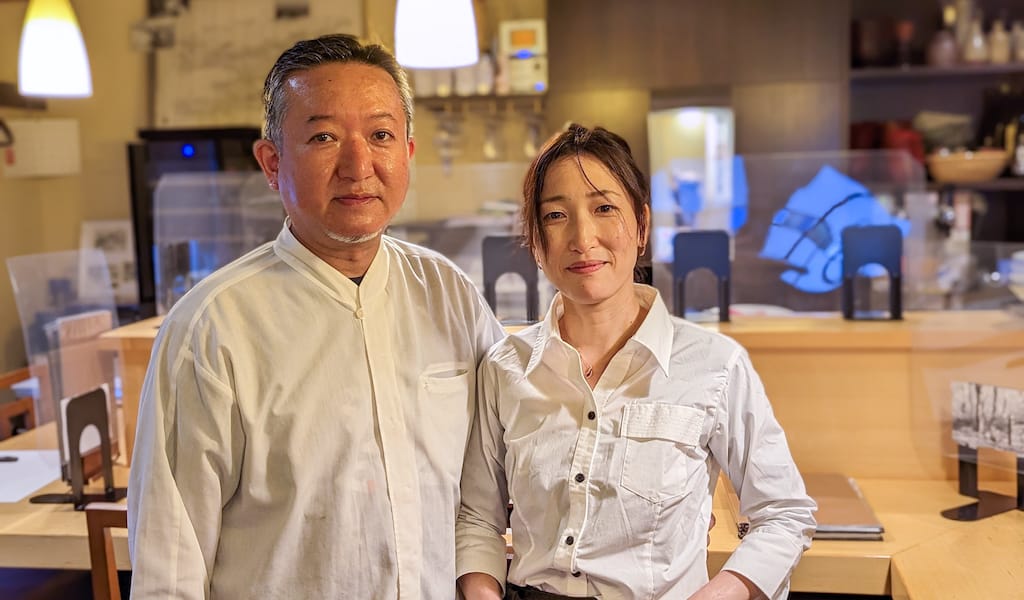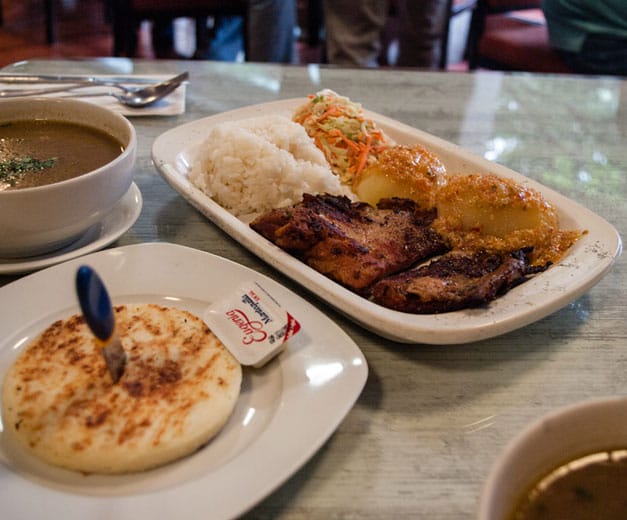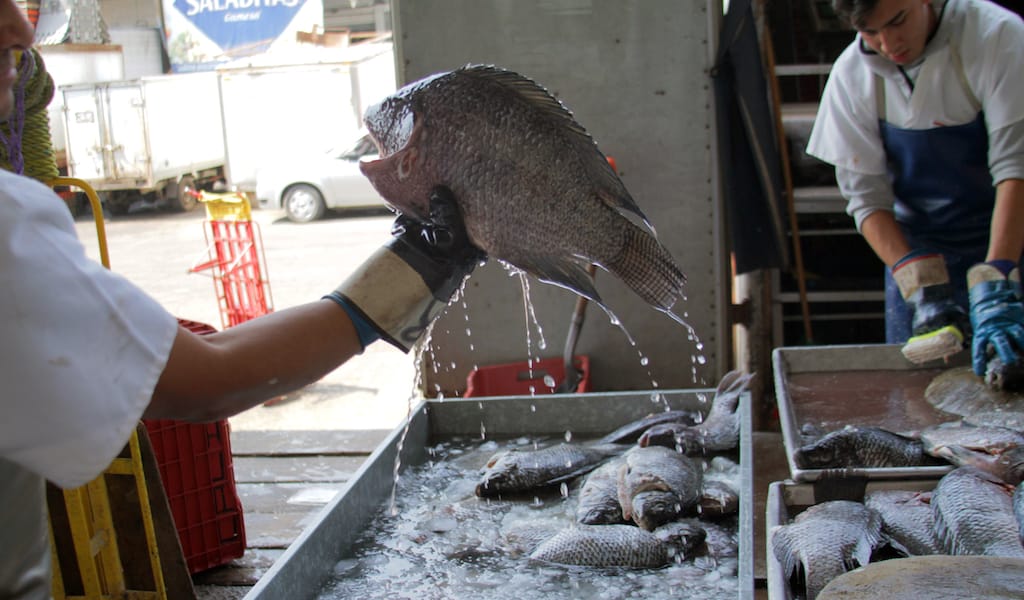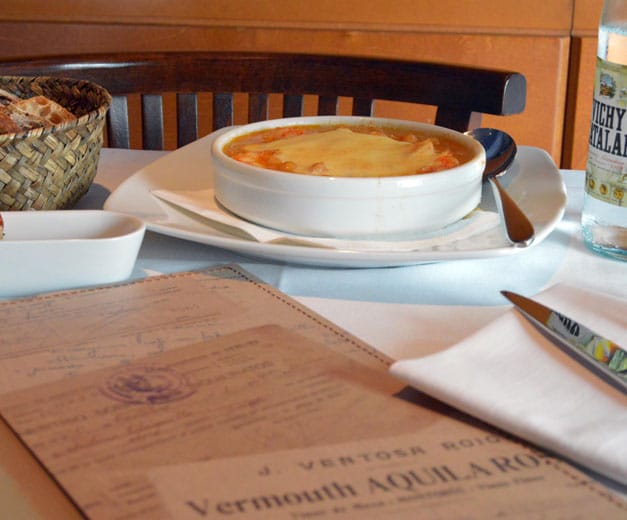Nanohana could almost be mistaken for someone’s house if it weren’t for a small lectern, propping open an enthusiastically-scrawled menu.
The restaurant is small and discreet, tucked down a side street, where its sandy-colored walls and wooden door with glass panels blends into a charming old neighborhood in Ueno in the east of Tokyo.
We pull open that door to reveal a cosy, retro interior, a few dark wood tables, green lamps on the wall and an S-shaped counter behind which lies the kitchen.
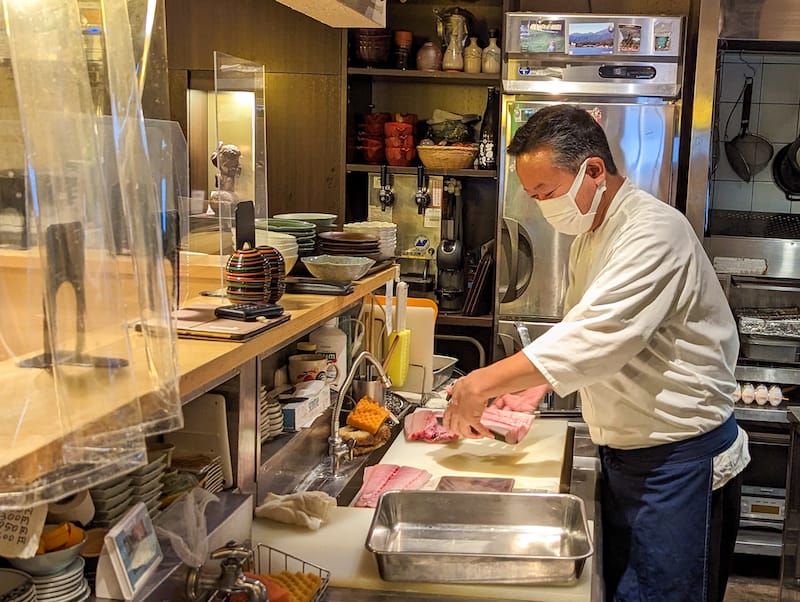
Most striking, however, is the paraphernalia from Sado Island – maps, old photos and bottles of sake line the walls. It’s clear we have stumbled into a home-away-from-home, a labor of love created by Nanohama’s owners, couple Tadahiro and Nami Ishizuka.
Sado Island, part of Niigata Prefecture, is located off Japan’s northwest coast – about a four-hour journey from Tokyo, via bullet train and subsequent ferry ride. It’s renowned for its rich culture, from traditional Noh theatre to Kodo, a world-famous taiko drumming group, to its five sake breweries.
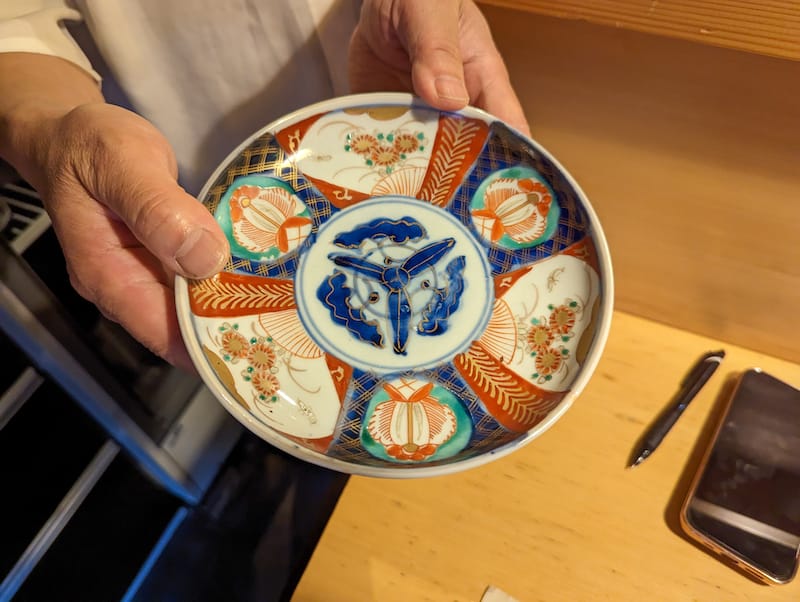
Tadahiro and Nami grew up there in villages on opposite sides of the island. Tadahiro was inspired by his mother to take up cooking. He trained in traditional Japanese cuisine in Tokyo before returning to Sado, where he and Nami ran the first incarnation of Nanohana for 18 years.
However, a sudden medical condition in the family led them to make the decision to move to Tokyo with their three children.
“Thinking about our children’s future, we wanted to live in a place where people didn’t know whether a family member had a disability or not,” Nami explains. “Growing up in a small community, this can have a big effect on children.”
The couple have now been running Nanohana in the capital for a decade. More than a restaurant, it represents a kind of shrine to their hometown, a love letter inked through local ingredients and regional ceramics.
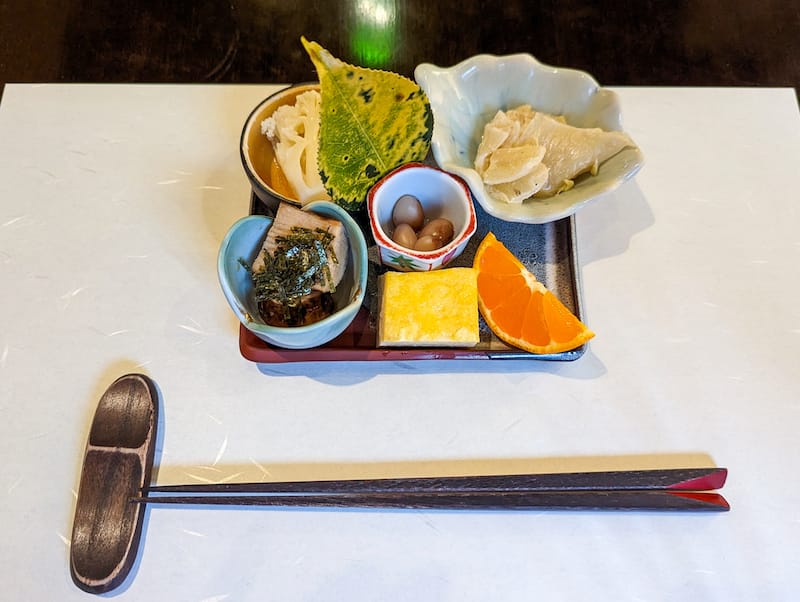
Their lunch menu offers a simple choice: seasonal fish ochazuke, a rice dish with hot tea or dashi poured on top, or a Niigata-style katsudon, deep-fried breaded pork served atop rice.
We opt for both, and are presented with the appetizers – an intricate set of five tiny dishes, decorated with a single leaf. “These are organic vegetables raised by my mother-in-law in Sado,” Nami explains as she presents us with this culinary work of art. “And the camellia leaf is also from her garden.” She turns to a map of Sado Island on the wall and indicates the southwest.
“At the top of this mountain, this is where the Kodo taiko drumming group are. And–” She traces her finger downwards. “At the bottom – here – is Shukunegi village. That’s where our garden is. Mother also grows rice there. She does a lot of work all by herself, but people in the area come over to help out. A neighbor drives a combine harvester for her,” she adds with a smile.
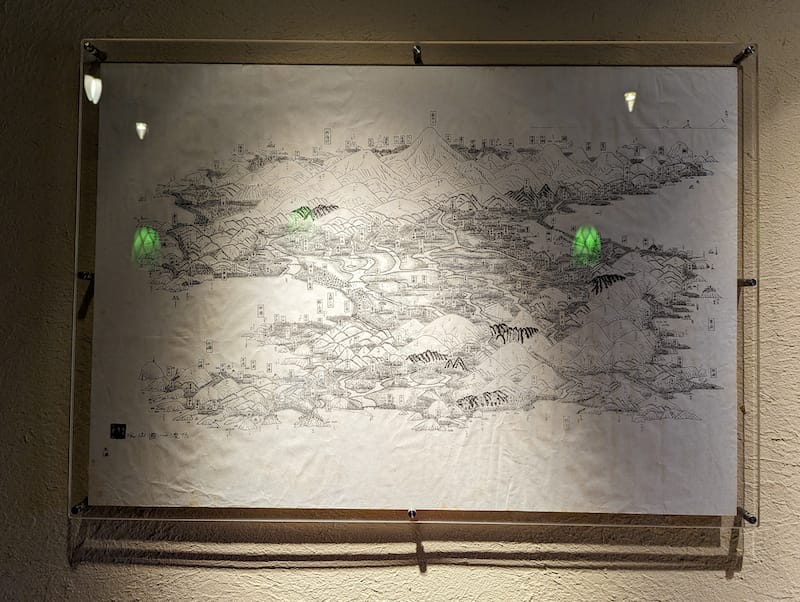
Each dish is exquisite, from cabbage in a light tofu-sesame dressing to crisp tangy cauliflower – a rare treat in Japan. Mouthful after mouthful, we take a tour through that garden in Shukunegi, rounding off with a refreshing slice of mandarin orange.
Tadahiro arrives at our table to present us with our next course – the ochazuke set with seasonal fish. Yellowtail, tuna and grilled salmon are coated in a rich sesame sauce, arranged in an elegant bowl and accompanied by rice, pickles and miso soup.
“The kome koji (rice fermentation starter) in this miso soup is from Sado, as are the spring onions,” he says with obvious pride, instructing us to order the dashi when we’re ready.
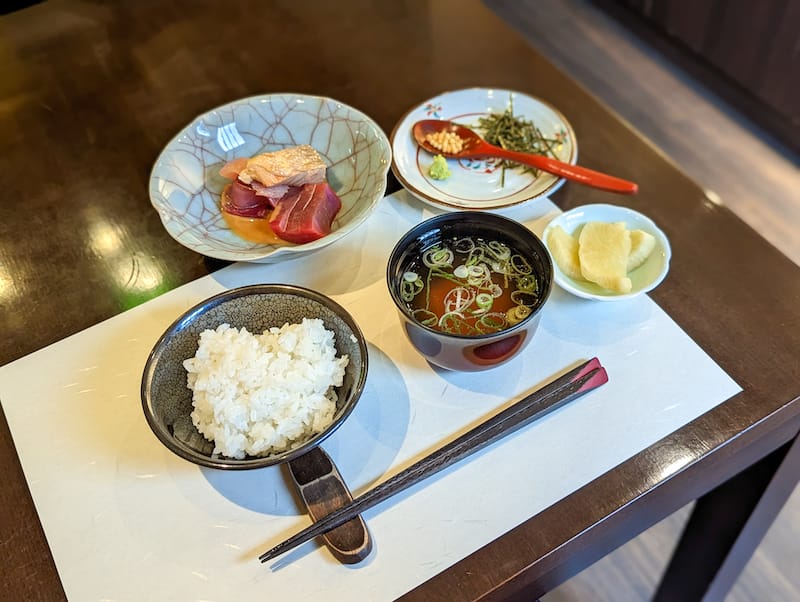
This ochazuke should be eaten in a particular way. We are first to eat some of the fish and the rice before pouring dashi onto the rice and adding some of the toppings, including – crucially – the remaining fish.
On our last visit, enthusiasm got the better of us: Tadahiro had gently mourned the fact that we gobbled up all the fish right away. We assure him that we’ll do better this time, and he laughs.
Beginning our ochazuke journey, the textures and flavors match the quality of the aesthetics – the sashimi fresh and tender, yielding with each bite, the grilled salmon tantalizingly salty and flaky.
Then, the dashi – at once light but complex. Tadahiro uses konbu (edible kelp) from the island of Rishiri off Japan’s far northern coast and high-grade ultra-thin katsuobushi (bonito flakes) with the chiai (the dark red, bloody meat) removed. The dashi lightly coats the rice, enhanced by crisp seaweed, arare (small, round puffed rice crackers) and wasabi.
Of course, this time we don’t forget the crowning glory and dutifully place the salmon on top.

We also sample the carnivore’s menu option – the Niigata-style katsudon. This regional variation eschews the common egg-and-onion topping, opting for 200g of thinly sliced breaded pork tenderloin in a sweet-savory sauce. It’s crisp and juicy without being oily, making it almost too easy to tidy away the generous portion.
All sake on the menu is from Sado Island, which boasts five breweries. On our first visit to Nanohana, we watched mildly enviously as a middle-aged woman at the counter ordered a hango — half the common serving of ichigo (around 180ml) – to go with her lunch. She had the air of a jorenkyaku, a regular customer.
Our Sado experience at Nanohana doesn’t stop at the ingredients; the crockery, too, is from the area. Tadahiro explains that the island was on the trade route taken by kitamaebune, merchant trade ships that sailed from the 1600s for more than 250 years. These ships would buy goods in one port, and sell them at another at a much higher price. They brought a lot of ceramics into the area, including ko-imari ware, old-style brightly-colored Japanese porcelain.
The variety of the Ishizuka’s collection doesn’t get a full showing until dinner, when they offer a multi-course seasonal meal. As we’re finishing up our lunch, Tadahiro is already preparing for the evening, carefully slicing up sawara (Japanese Spanish mackerel) that he’s planning to flavor with sake lees from Sado and miso from Niigata.
Nanohana has built up a customer base in the neighborhood, and among locals who hail from Niigata prefecture. They even have one customer from Sado who stops by on their annual trip to Tokyo for cleaning the graves of their ancestors.
This cozy outpost binds the island to the capital through a multitude of invisible threads. Yet this won’t always be the case. With their children fully grown, the Ishizukas plan to finally return to their beloved hometown sometime in 2024.
We’re delighted for them, and know we’ll be stopping by to eat plenty more times before they leave. We’ll also be heading to Sado Island as soon as we can; the couple’s warmth and the delicious cuisine have drawn us to it.
We leave Nanohana, full of food and a lingering nostalgia for a place we’ve yet to go.
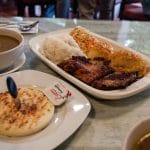 October 25, 2013 La Ciénaga
October 25, 2013 La Ciénaga
Immigration between the U.S. and Mexico has long been thought of as a one-way […] Posted in Mexico City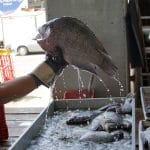 March 10, 2020 Mercado La Nueva Viga
March 10, 2020 Mercado La Nueva Viga
The place smells like a wet dog. The fishmongers have long grown accustomed to it, but […] Posted in Mexico City August 13, 2014 La Estrella
August 13, 2014 La Estrella
An old star from the previous century still shines brightly in Port Vell. Renovated in […] Posted in Barcelona
Published on February 08, 2023
Related stories
October 25, 2013
Mexico CityImmigration between the U.S. and Mexico has long been thought of as a one-way phenomenon, but global economic upheaval and other factors have made the neighbor to the south the new Land of Opportunity. As a recent New York Times article put it, for the first time “more Americans have been added to the population…
March 10, 2020
Mexico CityThe place smells like a wet dog. The fishmongers have long grown accustomed to it, but the uninitiated are assaulted by the full force of Mercado La Nueva Viga’s funky barnyard smell almost from Eje 6, the congested avenue were we turn into the entrance. The trick, we find, is to walk quickly into one…
August 13, 2014
BarcelonaAn old star from the previous century still shines brightly in Port Vell. Renovated in 1992, La Estrella is a small, comfortable restaurant that serves simple but refined Catalan dishes, thoughtfully prepared from quality local products. The atmosphere is formal but relaxed, quiet and friendly, with the time kept by the discreet sounding of three…







































